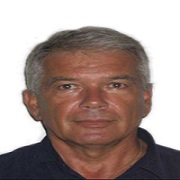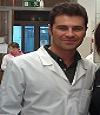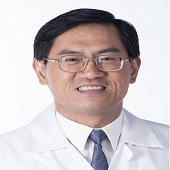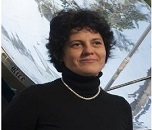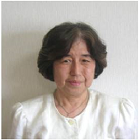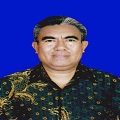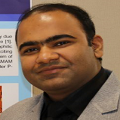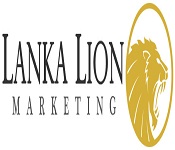Theme:
Nano Pharmaceuticals 2019
- Nano Pharmaceuticals 2019
- Welcome Message
- Sessions/Tracks
- Why to Attend
- Past Conference Report
- Past Conferences
- Keynote Speakers
- Past Conference Chairs/Co-Chairs
- Market Analysis
- Past Conference Moderators
- Media Partners
- Letter of Invitation
Conference Series LLC Ltd invites all the participants from all over the world to attend 2nd International Conference and Exhibition on Pharmaceutical Nanotechnology and Nanomedicine ( Nano Pharmaceuticals 2019) during March 20-21, 2019 in New York, USA. We cordially welcome all the eminent researchers, students, and delegates to take part in this upcoming event to witness invaluable scientific discussions and contribute to the future innovations in the field of Pharmaceutical Nanotechnology and Nanomedicine.
The primary objective of this meeting is to compile researchers involved in Pharmaceutical Nanotechnology and Nanomedicine. The meeting will take a unified approach to research and it will bring about researchers specializing field. We expected to present a universal vision of the importance of Pharmaceutical Nanotechnology and Nanomedicine in different ecosystems and what can be done about it.
Pharmaceutical Nanotechnology and Nanomedicine 2019 conference will focus on the latest and exciting innovations in all the areas of Nanomedicine and Nanotechnology. This year's annual congress highlights the theme, "Navigating the Future of Nanomedicine & Nanotechnology" which reflects the innovative progress in Pharmaceutical Sciences. The conference includes workshops, symposiums, special keynote sessions conducted by eminent and renowned speakers who excel in the field of Pharmaceutical Nanotechnology and Nanomedicine. This International Nano Pharmaceuticals 2019 Conference also encourages the active participation of young student researchers as we are hosting Poster Award Competition and Young research Forum at the conference venue.
Target Audience:
Nano Science and Nano Technology Researchers
Nano Science and Nano Technology Associations and Societies
Professors, Associate Professors, Asst. Professors, Scientists
Graduates and Post Graduates
Directors, Presidents, CEO's of Organizations/Companies
Manufacturing Companies
Noble laureates in Health Care and Medicine
Details of Pharmaceutical Nanotechnology and Nanomedicine Conference 2019:
| Conference Name | Place | Date |
|---|---|---|
| NanoPharmaceuticals 2019 | New York, USA | March 20-21, 2019 |
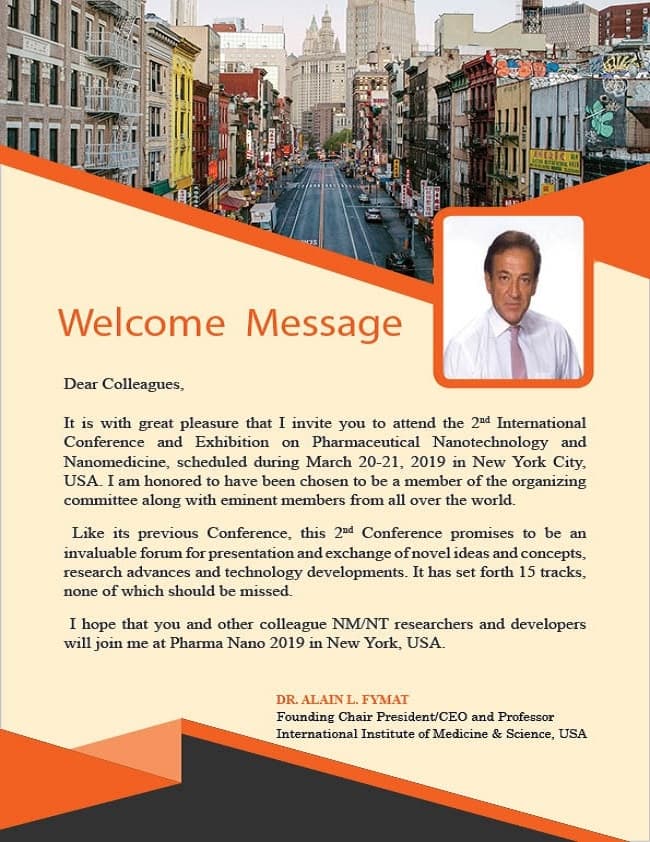
Track 1: Nanoparticles and Nanomedicine
Nanomedicine is a branch of medicine that applies the knowledge and tools of nanotechnology in the prevention and treatment of diseases. Nanomedicine involves the use of nanoscale materials, such as biocompatible nanoparticles and Nano robots, for diagnosis, delivery, sensing or actuation purposes in a living organism. Nanoparticles with ~100 nanometers have been widely used to improve the drug accumulation, internalization and therapeutic efficacy. The physicochemical and biological properties of the Nanoparticles can also be finely adjusted by tailoring their chemical properties, sizes, shapes, structures, morphologies, and surface properties. Nanomedicine is the medical application of Nanotechnology. Nanotechnology has provided the possibility of delivering drugs to specific cells using nanoparticles. Current problems for nanomedicine involve understanding the issues related to toxicity and environmental impact of nanoscale materials.
Nanomedicine seeks to deliver a valuable set of research tools and clinically useful devices in the near future.The National Nanotechnology Initiative expects new commercial applications in the pharmaceutical industry that may include advanced drug delivery systems, new therapies, and in vivo imaging.
Related Societies USA: Graphene Stakeholders Association (USA), Nano Science and Technology Institute (NSTI), NanoBusiness Commercialization Association, International Association of Nanotechnology
Related Societies Europe: European Nanoscience and Nanotechnology Association (ENNA), German Association of Nanotechnology, Nanotechnology Industries Association, British Society for Nanomedicine
Related Societies Asia Pacific: Asian Nanoscience and Nanotechnology Association (ANNA), Asian Society for Precision Engineering and Nanotechnology (ASPEN), Nano Technology Research Association (NTRA) South Korea, American Association of Pharmaceutical Scientists (AAPS)
Track 2: Pharmaceutical Nanotechnology
Pharmaceutical Nanotechnology based system deals with emerging new technologies for developing customized solutions for drug delivery systems. The drug delivery system positively impacts the rate of absorption, distribution, metabolism, and excretion of the drug or other related chemical substances in the body. In addition to this the drug delivery system also allows the drug to bind to its target receptor and influence that receptor’s signaling and activity. Pharmaceutical nanotechnology embraces applications of nanoscience to pharmacy as nanomaterials, and as devices like drug delivery, diagnostic, imaging and biosensor.
Related Societies USA: Graphene Stakeholders Association (USA), Nano Science and Technology Institute (NSTI), NanoBusiness Commercialization Association, International Association of Nanotechnology
Related Societies Europe: European Nanoscience and Nanotechnology Association (ENNA), German Association of Nanotechnology, Nanotechnology Industries Association, British Society for Nanomedicine
Related Societies Asia Pacific: Asian Nanoscience and Nanotechnology Association (ANNA), Asian Society for Precision Engineering and Nanotechnology (ASPEN), Nano Technology Research Association (NTRA) South Korea, American Association of Pharmaceutical Scientists (AAPS)
Track 3: The Evolution of Nanomedicine with the Re-Evolution of Nanotechnology
Nanotechnology seems to have gained a widespread interest in the recent years. Nanotechnology has considerably accelerated the growth of regenerative medicine the past few years. Application of Nanotechnology in regenerative medicine has revolutionized the designing of grafts and scaffolds which has resulted in new grafts/scaffold systems having significantly enhanced cellular and tissue regenerative properties. Since the cell–cell and cell-matrix interaction in biological systems takes place at the nanoscale level, the application of nanotechnology gives an edge in modifying the cellular function and/or matrix function in a more desired way to mimic the native tissue/organ. Nanomedicine introduces Nanotechnology concepts into medicine and thus joins two large cross disciplinary fields with an unprecedented societal and economical potential arising from the natural combination of specific achievements in the respective fields.
Related Societies USA: Graphene Stakeholders Association (USA), Nano Science and Technology Institute (NSTI), NanoBusiness Commercialization Association, International Association of Nanotechnology
Related Societies Europe: European Nanoscience and Nanotechnology Association (ENNA), German Association of Nanotechnology, Nanotechnology Industries Association, British Society for Nanomedicine
Related Societies Asia Pacific: Asian Nanoscience and Nanotechnology Association (ANNA), Asian Society for Precision Engineering and Nanotechnology (ASPEN), Nano Technology Research Association (NTRA) South Korea, American Association of Pharmaceutical Scientists (AAPS)
Track 4: Nanomedicine and Nanobiotechnology
Nanotechnology is universally recognized as one of the most important scientific fields of the twentyâ€first century. Biomedical applications of this technology offer great promise in finding new approaches to repairing damaged tissues and curing disease. Nanomedicine and Nanobiotechnology will address key topics from the perspectives of medicine, biology, physics, chemistry, and engineering, and serve as an encyclopedic reference for nanoâ€medicine and Nanobiotechnology research.
Related Societies USA: Graphene Stakeholders Association (USA), Nano Science and Technology Institute (NSTI), NanoBusiness Commercialization Association, International Association of Nanotechnology
Related Societies Europe: European Nanoscience and Nanotechnology Association (ENNA), German Association of Nanotechnology, Nanotechnology Industries Association, British Society for Nanomedicine
Related Societies Asia Pacific: Asian Nanoscience and Nanotechnology Association (ANNA), Asian Society for Precision Engineering and Nanotechnology (ASPEN), Nano Technology Research Association (NTRA) South Korea, American Association of Pharmaceutical Scientists (AAPS)
Track 5: Nanorobotics and Nanomedicine
Nanomedicine will be based on the ability to build Nanorobots. In the future these Nanorobots could actually be programmed to repair specific diseased cells, functioning in a similar way to antibodies in our natural healing processes. The motivation for the new manipulation technology is the desire to enter the micro- and Nanoworld not only by viewing but also acting, altering micro- and nanosized objects. A new era on medicine are expected to happen in the coming years. Due to the advances in the field of Nanotechnology, Nanodevice manufacturing has been growing gradually. The elimination of bacterial infections in a patient within minutes, instead of using treatment with antibiotics over a period of weeks.
Related Societies USA: Graphene Stakeholders Association (USA), Nano Science and Technology Institute (NSTI), NanoBusiness Commercialization Association, International Association of Nanotechnology
Related Societies Europe: European Nanoscience and Nanotechnology Association (ENNA), German Association of Nanotechnology, Nanotechnology Industries Association, British Society for Nanomedicine
Related Societies Asia Pacific: Asian Nanoscience and Nanotechnology Association (ANNA), Asian Society for Precision Engineering and Nanotechnology (ASPEN), Nano Technology Research Association (NTRA) South Korea, American Association of Pharmaceutical Scientists (AAPS)
Track 6: Smart Drug Delivery Technology
Some smart drug delivery platform is based on neutral phospholipid Nanoliposomes. Where classic Classic liposomes modalities have had manufacturing problems involving sizing, uniformity, loading, storage, and enhancement compatibility, which can be overcome by employing true nanotechnology to build liposomes upon discrete self-assembling DNA scaffolds. The smart drug delivery system is used for delivering drugs to the host. Biological information detected by biological sensors is analyzed and the drug delivery system is actuated to deliver the drug based on the information. MEMS or NEMS technology based drug pumps, micro-pumps, micro-needles, micro-osmotic pumps, and nano-pumps are utilized for smarter drug delivery. One of the concerns these days about self-assembling nanotechnology is that it is so advanced beyond the current drug paradigm that it becomes problematic from a regulatory point of view. While there is currently no drug treatment delivered directly into these types of cancers.
Related Societies USA: Graphene Stakeholders Association (USA), Nano Science and Technology Institute (NSTI), NanoBusiness Commercialization Association, International Association of Nanotechnology
Related Societies Europe: European Nanoscience and Nanotechnology Association (ENNA), German Association of Nanotechnology, Nanotechnology Industries Association, British Society for Nanomedicine
Related Societies Asia Pacific: Asian Nanoscience and Nanotechnology Association (ANNA), Asian Society for Precision Engineering and Nanotechnology (ASPEN), Nano Technology Research Association (NTRA) South Korea, American Association of Pharmaceutical Scientists (AAPS)
Track 7: Computational Studies in Nanoparticles
The computational studies in nanoparticles have demonstrated that there has been considerable progress in nano- and biotechnology in the last several years. However, several key challenges have also become apparent, including the need for a better understanding of nanoparticle behaviour in vivo and the development of more effective nanoparticle therapeutics. Computational efforts are becoming an important tool in addressing both of these challenges, as well as in generally facilitating and accelerating nanotechnology-based translational research. The Nanoinformatics has come out as a new research area that covers raw data management, analysis of the data derived from biomedical applications and simulation of nanoparticle interactions with biological systems depicting the integration of biology, nanotechnology and informatics to form the basis for computational Nanomedicine.
Related Societies USA: Graphene Stakeholders Association (USA), Nano Science and Technology Institute (NSTI), NanoBusiness Commercialization Association, International Association of Nanotechnology
Related Societies Europe: European Nanoscience and Nanotechnology Association (ENNA), German Association of Nanotechnology, Nanotechnology Industries Association, British Society for Nanomedicine
Related Societies Asia Pacific: Asian Nanoscience and Nanotechnology Association (ANNA), Asian Society for Precision Engineering and Nanotechnology (ASPEN), Nano Technology Research Association (NTRA) South Korea, American Association of Pharmaceutical Scientists (AAPS)
Track 8: Research and Development of Nanomedicine
Nanomedicine has been developing rapidly in recent years, particularly in the development of novel nano tools for medical diagnosis and treatment. For instance, a new trend is becoming prevalent in developing Nanosystems for simultaneous tumour diagnosis and therapy. A new terminology "theranostics" has been frequently used and applied in pre-clinical research and trials. A Nanosystem can simultaneously achieve both cell targeted in vivo imaging and photothermal treatment of cancer. While achieving concurrent high spatial and temporal resolution of the lesions via cell targeting; special non-evasive treatments are implemented at the same time by various means, such as localized drug release, hyperthermia, and photo-thermal therapy. Inspired by these challenging problems in biomedical fields, the development of the nanotechnologies will be the key in addressing some of the critical issues in medicine, especially in early cancer diagnosis and treatment.
Related Societies USA: Graphene Stakeholders Association (USA), Nano Science and Technology Institute (NSTI), NanoBusiness Commercialization Association, International Association of Nanotechnology
Related Societies Europe: European Nanoscience and Nanotechnology Association (ENNA), German Association of Nanotechnology, Nanotechnology Industries Association, British Society for Nanomedicine
Related Societies Asia Pacific: Asian Nanoscience and Nanotechnology Association (ANNA), Asian Society for Precision Engineering and Nanotechnology (ASPEN), Nano Technology Research Association (NTRA) South Korea, American Association of Pharmaceutical Scientists (AAPS)
Track 9: Nanoparticles as Precise Drug Delivery Systems
With the remarkable development of Nanotechnology in recent years, new drug delivery approaches based on the state-of-the-art nanotechnology have been receiving significant attention. Nanoparticles, an evolvement of nanotechnology, are increasingly considered as a potential candidate to carry therapeutic agents safely into a targeted compartment in an organ, particular tissue or cell. These particles are colloidal structures with a diameter less than 1,000 nm, and therefore can penetrate through diminutive capillaries into the cell’s internal machinery. This innovative delivery technique might be a promising technology to meet the current challenges in drug delivery. The different types of nanoparticles drug delivery systems under investigation and their prospective therapeutic applications, and also present a closer look at the advances, current challenges, and future direction of nanoparticles drug delivery systems.
Related Societies USA: Graphene Stakeholders Association (USA), Nano Science and Technology Institute (NSTI), NanoBusiness Commercialization Association, International Association of Nanotechnology
Related Societies Europe: European Nanoscience and Nanotechnology Association (ENNA), German Association of Nanotechnology, Nanotechnology Industries Association, British Society for Nanomedicine
Related Societies Asia Pacific: Asian Nanoscience and Nanotechnology Association (ANNA), Asian Society for Precision Engineering and Nanotechnology (ASPEN), Nano Technology Research Association (NTRA) South Korea, American Association of Pharmaceutical Scientists (AAPS)
Track 10: Polymer Nanoparticles for Nanomedicines
The use of nanoscale materials and processes to address human disease is perhaps the most promising, considering that most complex downstream symptoms of disease are initiated by molecular level phenomena. Nanomedicine is defined as biological and medical intervention at the nanometer scale for the treatment, diagnosis, and increased understanding of biology and disease. Tremendous advances in the area of polymer synthesis and self-assembly have given rise to a new toolbox of engineered nanosized delivery and diagnostic agents that permit systemic and local administration, circulation in the bloodstream, and uptake and diffusion at the cellular and subcellular level.
Related Societies USA: Graphene Stakeholders Association (USA), Nano Science and Technology Institute (NSTI), NanoBusiness Commercialization Association, International Association of Nanotechnology
Related Societies Europe: European Nanoscience and Nanotechnology Association (ENNA), German Association of Nanotechnology, Nanotechnology Industries Association, British Society for Nanomedicine
Related Societies Asia Pacific: Asian Nanoscience and Nanotechnology Association (ANNA), Asian Society for Precision Engineering and Nanotechnology (ASPEN), Nano Technology Research Association (NTRA) South Korea, American Association of Pharmaceutical Scientists (AAPS)
Track 11: Design and Characterization of Nano Drug Systems
Recent years have witnessed the rapid development of inorganic nanomaterials for medical applications. At present, nanomedicines-nanoparticles (NPs) destined for therapy or diagnosis purposes-can be found in a number of medical applications, including therapeutics and diagnosis agents .Pushing the limits of nanotechnology towards enhanced Nanomedicines will surely help to reduce side effects of traditional treatments and to achieve earlier diagnosis. The interplay between engineered nanomaterials and biological components is influenced by complex interactions which make predicting their biological fate and performance a nontrivial issue. We hope that both early-stage and experienced researchers will find it valuable for designing nanoparticles for enhanced bio-performance. Nanoemulsions have attracted great attention in research, dosage form design and pharmacotherapy. This is as a result of a number of attributes peculiar to nanoemulsions.
Related Societies USA: Graphene Stakeholders Association (USA), Nano Science and Technology Institute (NSTI), NanoBusiness Commercialization Association, International Association of Nanotechnology
Related Societies Europe: European Nanoscience and Nanotechnology Association (ENNA), German Association of Nanotechnology, Nanotechnology Industries Association, British Society for Nanomedicine
Related Societies Asia Pacific: Asian Nanoscience and Nanotechnology Association (ANNA), Asian Society for Precision Engineering and Nanotechnology (ASPEN), Nano Technology Research Association (NTRA) South Korea, American Association of Pharmaceutical Scientists (AAPS)
Track 12: Toxicology of Nanoparticles
Nanotechnology is a rapidly growing field having potential applications in many areas. Nanoparticles have been studied for cell toxicity, immunotoxicity, and genotoxicity. Tetrazolium-based assays such as MTT, MTS, and WST-1 are used to determine cell viability. Different types of cell cultures, including cancer cell lines have been employed as in vitro toxicity models. Considering the potential applications of NPs in many fields and the growing apprehensions of FDA about the toxic potential of Nanoproducts, it is the need of the hour to look for new internationally agreed, free of bias toxicological models by focusing more on in vivo studies. The rapid expansion of nanotechnology promises to have great benefits for society, yet there is increasing concern that human and environmental exposure to engineered nanomaterials may result in significant adverse effects. The system was developed for Nanotoxicity assessment at single and multiple cell levels which can measure and compare the microscopic and macroscopic effects of nanoparticles interaction with cells, without interference from neighbouring cells' cues and also overall integrative effects produced by nanoparticles and cell–cell communication.
Related Societies USA: Graphene Stakeholders Association (USA), Nano Science and Technology Institute (NSTI), NanoBusiness Commercialization Association, International Association of Nanotechnology
Related Societies Europe: European Nanoscience and Nanotechnology Association (ENNA), German Association of Nanotechnology, Nanotechnology Industries Association, British Society for Nanomedicine
Related Societies Asia Pacific: Asian Nanoscience and Nanotechnology Association (ANNA), Asian Society for Precision Engineering and Nanotechnology (ASPEN), Nano Technology Research Association (NTRA) South Korea, American Association of Pharmaceutical Scientists (AAPS)
Track 13: Emerging Nanomedicine
Currently, the treatment of HIV requires regular oral dosage of HIV drugs, and chronic oral dosing has significant complications that arise from the high pill burden experienced by many patients across populations with varying conditions leading to non-adherence to therapies. Recent evaluation of HIV patient groups have shown a willingness to switch to nanomedicine alternatives if benefits can be shown. Research efforts by the Liverpool team have focused on the development of new oral therapies, using Solid Drug Nanoparticle (SDN) technology which can improve drug absorption into the body, reducing both the dose and the cost per dose and enabling existing healthcare budgets to treat more patients.
In a four-year study conducted on the mouse model in advanced breast cancer metastasis in the eye's anterior chamber, the new nanoparticle not only killed tumour cells in the eye, but also extended the survival of experimental mice bearing 4T1 tumors, a cell line that is extremely difficult to kill. "Previous monotherapies have not extended the lifetimes of mice bearing this type of tumour".
Related Societies USA: Graphene Stakeholders Association (USA), Nano Science and Technology Institute (NSTI), NanoBusiness Commercialization Association, International Association of Nanotechnology
Related Societies Europe: European Nanoscience and Nanotechnology Association (ENNA), German Association of Nanotechnology, Nanotechnology Industries Association, British Society for Nanomedicine
Related Societies Asia Pacific: Asian Nanoscience and Nanotechnology Association (ANNA), Asian Society for Precision Engineering and Nanotechnology (ASPEN), Nano Technology Research Association (NTRA) South Korea, American Association of Pharmaceutical Scientists (AAPS)
Track 14: Pharmaceutical Formulations
Formulation studies involve developing a preparation of the drug which is both stable and acceptable to the patient. For orally administered drugs, this usually involves incorporating the drug into a tablet or a capsule. It is important to make the distinction that a tablet contains a variety of other potentially inert substances apart from the drug itself, and studies have to be carried out to ensure that the encapsulated drug is compatible with these other substances in a way that does not cause harm, whether direct or indirect. Formulation studies also consider such factors as particle size, polymorphism, pH, and solubility, as all of these can influence bioavailability and hence the activity of a drug. The drug must be combined with inactive ingredients by a method which ensures that the quantity of drug present is consistent in each dosage unit e.g. each tablet. The dosage should have a uniform appearance, with an acceptable taste, tablet hardness, or capsule disintegration. By the time phase III clinical trials are reached, the formulation of the drug should have been developed to be close to the preparation that will ultimately be used in the market.
Related Societies USA: Graphene Stakeholders Association (USA), Nano Science and Technology Institute (NSTI), NanoBusiness Commercialization Association, International Association of Nanotechnology
Related Societies Europe: European Nanoscience and Nanotechnology Association (ENNA), German Association of Nanotechnology, Nanotechnology Industries Association, British Society for Nanomedicine
Related Societies Asia Pacific: Asian Nanoscience and Nanotechnology Association (ANNA), Asian Society for Precision Engineering and Nanotechnology (ASPEN), Nano Technology Research Association (NTRA) South Korea, American Association of Pharmaceutical Scientists (AAPS)
Track 15: Applied Pharmaceutical Science
Pharmacy is the science and technique of preparing and dispensing drugs. It is a health profession that links health sciences with chemical sciences and aims to ensure the safe and effective use of pharmaceutical drugs. A theory relating chemical structure to pharmaceutical activity emerged from the interplay of experimental results from animal and human tests using vaccines, antitoxins, and antibodies with chemical knowledge about dyes and their molecular structures. Although pharmacology is essential to the study of pharmacy, it is not specific to pharmacy. Pharmacoinformatics is considered as another new discipline, for systematic drug discovery and development with efficiency and safety. The progressively more important role of the chemist and chemical science in pharmaceuticals in the early-20th century is mirrored in the history of the American Chemical Society's Division of Medicinal Chemistry.
Related Societies USA: Graphene Stakeholders Association (USA), Nano Science and Technology Institute (NSTI), NanoBusiness Commercialization Association, International Association of Nanotechnology
Related Societies Europe: European Nanoscience and Nanotechnology Association (ENNA), German Association of Nanotechnology, Nanotechnology Industries Association, British Society for Nanomedicine
Related Societies Asia Pacific: Asian Nanoscience and Nanotechnology Association (ANNA), Asian Society for Precision Engineering and Nanotechnology (ASPEN), Nano Technology Research Association (NTRA) South Korea, American Association of Pharmaceutical Scientists (AAPS)
With members from around the world focused on learning about Nanomedicine and its advances; this is your best opportunity to reach the largest assemblage of participants from the Nanotechnology community. Conduct presentations, distribute information, meet with current and potential scientists, make a splash with new drug developments, and receive name recognition at this 2-day event.
Pharma Nano 2018
Conference Series LLC Ltd hosted the “International Conference and Exhibition on Pharmaceutical Nanotechnology and Nanomedicine” (Pharma Nano 2018) during April 18-19, 2018, at Hilton Garden Inn Las Vegas Strip South 7830 S Las Vegas Blvd, Las Vegas, NV 89123, USA.
Pharma Nano 2018 is specifically premeditated with a unifying axiom providing platform to widen the imminent scientific discoveries in the field of Pharmaceutical Nanotechnology and Nanomedicine and to deliver novel ideas besides incorporating better understanding of their role in Pharma, Drug Manufacturers, Business Management and Marketing. The scientific meeting has laid the path for the development and the validation of Pharmaceutical Nanotechnology and Nanomedicine under the theme of “Breakthroughs in Pharmaceutical Nanotechnology: Advancements and Challenges”.
Conference Series LLC Ltd is prerogative to thank the Organizing Committee, Editorial Board Members and Moderator – Dr. Nataliya Roth, University of Natural Resources and Life Sciences, Austria, speaker participants, poster presenters and attendees for enormous support and participation in this grand venture.
The highlights of the meeting were the eponymous lectures, delivered by the following speakers:
P R Raghavan, Nanorx Inc., USA
Eleonora Babayants, Galaxy Consulting, USA
Long-ping Wen, South China University of Technology, china
Shuhua Bai, Husson University, USA
Xudong Huang, Harvard Medical School, USA
Thomas J Webster, Northeastern University, USA
Istvan Toth, The University of Queensland, Australia
Bonex Wakufwa Mwakikunga, DST/CSIR National Centre for Nano-Structured Materials, South Africa
Nicky Thomas, University of South Australia, Australia
Muhammad Yasir Ali, Philipps University Marburg, Germany
Arend Laurence Mapanawang, Yayasan Medika Mandiri Foundation, Indonesia
Imran Tariq, Philipps University of Marburg, Germany
Hendry Izaac Elim, Pattimura University, Indonesia
Josh Eixenberger, Boise State University, USA
By the endless support of the Journal of Pharmaceutical Nanotechnology and Nanomedicine. Conference Series LLC Ltd is pleased to announce our 2nd International Conference and Exhibition on Pharmaceutical Nanotechnology and Nanomedicine during March 20-21, 2019 at New York, USA
We are delighted to all our Organising Committee Members, Keynote Speakers, Speakers, Delegates, Students, Exhibitor and Media partners for making our Past Pharma Nano 2018 Conference in USA Region with great Pride.
- International Conference and Exhibition on Pharmaceutical Nanotechnology and Nanomedicine, April 18-19, 2018
- Venue: Hilton Garden Inn Las Vegas Strip South 7830 S Las Vegas Blvd, Las Vegas, NV 89123, USA
Past Conference Keynote Speakers
Our warm gratitude to all the Honorable Keynote Speakers of Pharma Nano 2018:
- Xudong Huang, Harvard Medical School, USA
- P R Raghavan, Nanorx Inc., USA
- Thomas J Webster, Northeastern University, USA
- Eleonora Babayants, Galaxy Consulting, USA
- Istvan Toth, The University of Queensland, Australia
- Bonex Wakufwa Mwakikunga, DST/CSIR National Centre for Nano-Structured Materials, South Africa
- Yashwant Pathak, University of South Florida, USA
- May M Alrashed, King Saud University, Saudi Arabia and many more….
It is our Pleasure to show our appreciation towards our Chairs/Co-Chairs for the Sessions, namely
- Istvan Toth, The University of Queensland, Australia
- Xudong Huang, Harvard Medical School, USA
- Toyoko Imae, National Taiwan University of Science and Technology, Taiwan
- Jordi Arbiol, Catalan Institute of Nanoscience and Nanotechnology, Spain and many more....
The global Nanomedicine market size was estimated at USD 138.8 billion in 2016. Technological advancements coupled with relevant applications in early disease diagnosis, preventive intervention, and prophylaxis of chronic as well as acute disorders is expected to bolster growth in this market. Nanotechnology involves the miniaturization of larger structures and chemicals at nanometric scale which has significantly revolutionized drug administration, thus influencing adoption of the technology through to 2025.
U.S. Nanomedicine market by products, 2013 - 2025 (USD Billion)
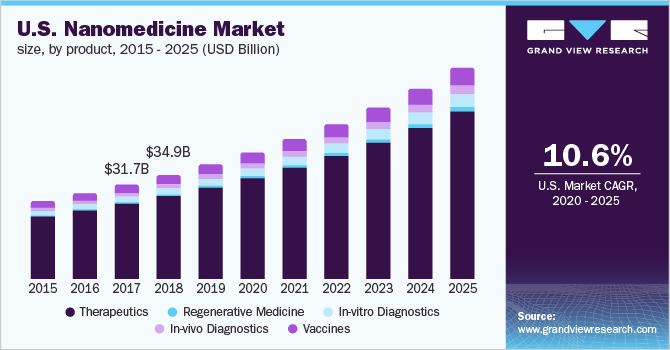
North America dominated the Nanomedicine market with revenue share of over 42% owing to presence of increasingly growing partnerships between enterprises operating herein and Nanomedicine start up organizations. Furthermore, support from the government entities coupled with higher R&D spending is attributive for largest share of region in the industrial space.
Nanomedicine market, by Region
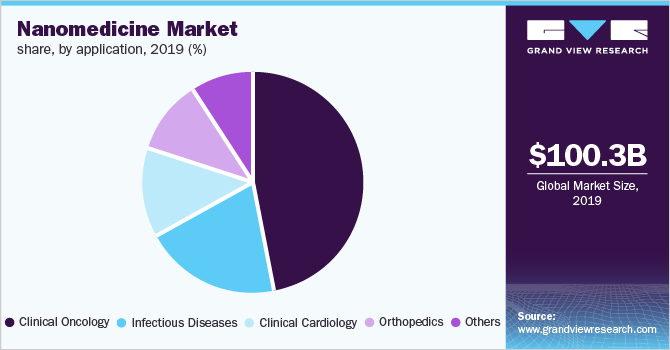
Conference series LLC Ltd expresses its gratitude to the conference Moderators, for taking up the responsibility to coordinate during the sessions, namely
- Oara Neumann, Rice University, USA
- Imran Tariq, Philipps University of Marburg, Germany and many more....
Conference series LLC Ltd offers Special thanks to the organisations like ALTA Publishing Company, BioPartner, Manuscriptedit.com, Bio-Equip, BREC Solutions, CourseForDoctors.com, Tabeeby, nWN nanotechnology, FeedsFloor personalities who supported the conferences by promoting in various modes online and offline which helped the conferences reach every nook and corner of the globe.
*** Bookmark Your Dates for the forthcoming Conference, We are hoping to see you soon! ***
It's the delegate's responsibility to investigate the visa requirements for USA and to apply for a visa, if necessary. Individuals requiring an official Letter of Invitation from the conference organizers can request one by email by writing to us at nanomedicines@conferencesamerica.org
To receive a Letter of Invitation, delegates, accompanying persons/children, student/post-doc/youth delegates and exhibitors must first register for the conference.
The registration fee minus a handling fee of USD 100 will be refunded after the conference if the visa was applied for in time and proof is shown that a visa could not be granted even though all requested documents were submitted.
All expenses incurred in relation to the conference are the sole responsibility of the delegate. The Letter of Invitation does not guarantee an entry visa to USA. However, the conference organizers will not directly contact embassies and consulates on behalf of delegates.
The deadline for requesting a Letter of Invitation is one month before travelling to USA.
Conference Highlights
- Nanoparticles and Nanomedicine
- Pharmaceutical Nanotechnology
- The Evolution of Nanomedicine with the Re-Evolution of Nanotechnology
- Nanomedicine and Nanobiotechnology
- Nanorobotics and Nanomedicine
- Smart Drug Delivery Technology
- Computational Studies in Nanoparticles
- Research and Development of Nanomedicine
- Nanoparticles as Precise Drug Delivery Systems
- Polymer Nanoparticles for Nanomedicines
- Design and Characterization of Nano Drug Systems
- Toxicology of Nanoparticles
- Emerging Nanomedicine
- Pharmaceutical Formulations
- Applied Pharmaceutical science
- Regulatory Aspects Towards Approval of Nanomedicine
To share your views and research, please click here to register for the Conference.
To Collaborate Scientific Professionals around the World
| Conference Date | March 20-21, 2019 | ||
| Sponsors & Exhibitors |
|
||
| Speaker Opportunity Closed | Day 1 | Day 2 | |
| Poster Opportunity Closed | Click Here to View | ||
Useful Links
Special Issues
All accepted abstracts will be published in respective Our International Journals.
Abstracts will be provided with Digital Object Identifier by










